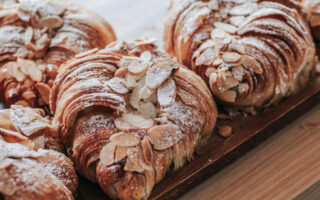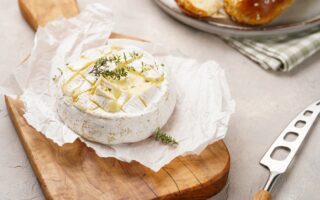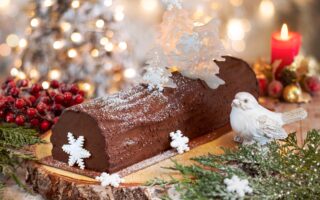Snuffling for Truffles in France
Community

The business of growing ‘des truffes’.
By Gemma Driver
We attended a local randonnée de la truffe (truffle ramble), in Savignac Les Eglises, Dordogne. We didn’t really know what to expect, but were surprised by the large turnout on that misty, frosty morning – around 80 of us! After a little wait in the medieval square, and several warming nips from our hip flask, we were off.
Each winter we become very interested in the mysterious and delectable truffle, and where it likes to grow. Desperate to find them in our garden, or spot them on walks, we thought that we might learn something from this ramble. We learnt loads!
The big crowd of walkers were led through stunning scenery, and were shown typical examples of Périgordian landscapes. Apparently, in 1900 – 1910, around 200 tonnes of truffles were collected each year in the Périgord, breeding ground of the famous black Truffe de Périgord. Now that the native landscape is disappearing, the traditional roaming sheep have gone and large farms have developed, truffle producers need to use all the available expertise and technology to encourage truffle growth. Despite this they currently only manage to produce three to five tonnes per year. No wonder all my old French cook books contain recipes with unfeasibly massive quantities of truffles in them! I had puzzled over how Périgourdian peasants could afford to eat chickens stuffed with truffles, in a truffle and foie gras sauce. It seems that they used to be far easier to find for free, and were therefore also cheaper to buy.
.jpg)
M. Bidon explaining ‘trufficulture’
Our crowd of ramblers stopped at several trufières (truffle plantations) of different ages, where we were shown the oak, hazel and green oak trees, on whose roots the truffles grow. Our host, Monsieur Bidon, pointed out the typical plant life in the orchard, along with a lack of anything growing over the spot where a truffle was pushing its way up. Bidon is the treasurer of the Association Culturelle du Pays de Savignac, and is also a truffle producer.
Our last stop was the best bit. We all filtered through some grand iron gates, and stood admiring a big stone house, and beautiful trufière. The owner gave us a talk about his plantation, and how it came to be, along with divulging a couple of truffle recipes. Then came the fantastic truffle-finding demonstration. There are three well-known methods for finding truffles; firstly the infamous pig method, where a pig sniffs about and goes bonkers when it gets a whiff of a truffle, because truffles smell like a pig’s sex pheromones. Secondly, facing the bright sun, you can move the end of a stick over some likely looking ground, and if white flies fly straight up, you may find a truffle underneath the spot from which they took off.  Finally, dogs can be trained to find truffles, and this is the method that we saw in action. It was incredible seeing the loyal dog, with it’s nose hovering over the ground, suddenly stop, paw at the ground, and step aside for his master to dig about in the soil. The farmer found a truffle at every single spot that the dog showed him. Sometimes the farmer would have a sniff at the soil to pinpoint the exact location of a fungus, and the dog was always rewarded with a treat.
Finally, dogs can be trained to find truffles, and this is the method that we saw in action. It was incredible seeing the loyal dog, with it’s nose hovering over the ground, suddenly stop, paw at the ground, and step aside for his master to dig about in the soil. The farmer found a truffle at every single spot that the dog showed him. Sometimes the farmer would have a sniff at the soil to pinpoint the exact location of a fungus, and the dog was always rewarded with a treat.
What an excellent way to spend a winter morning!
Look out for posters in your local tabacs, post offices and on noticeboards, where walk and talks on all kinds of subjects will be advertised. Getting out there and enjoying yourselves, you automatically meet loads of people, and get to absorb invaluable local knowledge.
 Buying truffles:
Buying truffles:
If you’d like to try a truffle, and have never bought one before, then I have some advice: Don’t buy them from the supermarkets. You will waste a lot of money on these soggy lumps, which are scentless flavourless and overpriced. Instead, go to your local truffle market, and sniff before you buy.
Cooking tip:
Truffles have an elusive flavour, and can easily be wasted if they aren’t treated properly. Use them to infuse as much as possible. For example, make truffle butter, plop a truffle into some oil to infuse, or put a truffle in a box of eggs for a day or two to flavour them. Scrambled, truffled eggs are wonderful!
•With thanks to M. Bidon, Trésorier de l’ACPS
Share to: Facebook Twitter LinkedIn Email
More in businesses, cooking, dordogne, garden, learning, people, pets
By Gemma Driver
Leave a reply
Your email address will not be published. Required fields are marked *



